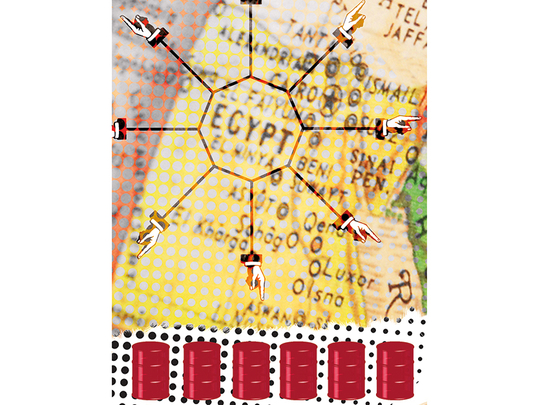
The Middle East was a region first unlocked in the early 1900s by the world’s largest oil companies which would eventually become BP, Shell, Chevron and ExxonMobil. The discoveries made by these companies unlocked the Middle East as the most prolific hydrocarbons region in the world.
The trend of independent oil companies (IOC) market domination has mostly continued through the past decade. Iraq’s first licensing round, including its super-giant fields in 2009, was led by ExxonMobil, BP, Shell and Eni. Up until the sanctions, Total and Statoil were leaders in Iran.
Qatar’s gas is firmly in the hands of ExxonMobil. In Egypt, its major producers continue to be BP, Shell and Apache.
The mid-2000s saw a wave of independents flock into the region, seeking to catalyse on the potential to acquire sub-giant fields in these notoriously IOC-dominated countries.
The most recent cycle took place in the Kurdistan Region of Iraq (KRI) around 2004, when Genel Energy and DNO moved into the region to acquire large discovered resources with low lifting costs. Only several years later were these efforts well rewarded with the discoveries of the Taq Taq and Tawke fields, two of the largest oilfields in the KRI.
These discoveries transformed these companies and pushed them into the top tier of independent oil and gas producers.
Smaller one-off moves in the region were made by Petroceltic in Algeria for gas prospecting, Afren elephant hunting in the KRI, and Dragon Oil which found great success on the drill bit in Turkmenistan and Egypt.
Not even a decade later, for a variety of reasons — mergers, sales and victims of oil price collapse — none of these independents exist, leaving a gap in the market for mid-sized independent oil and gas companies.
With oil price now stabilising in the $50-$60 (Dh183.65-Dh220.38) per barrel range for the foreseeable future, a new wave of independents has ventured to fill that void. These companies have moved into the Middle East for a few key reasons:
* The region is a known petroleum province which offers low risk onshore assets with low operating costs and with existing infrastructure able to quickly and cost effectively move product to market.
* There is the ability to acquire production or discovered resources at competitive costs.
* For the resource size independents seek (under 500 million barrels) there is limited competition as it is too small for IOCs. And many independents who would be the natural competition are still licking their wounds following the aftermath of the oil price collapse.
The country seeing the biggest wave of independents flocking to the market is Egypt. It is a well-known petroleum province, with a robust local oilfield services market, and strong infrastructure to capture all new production.
Due to some challenges around receivables from the national oil and gas companies, it has enabled many companies to come in during this current window and acquire resources and consolidate a portfolio to be in position to become a significant producer as these are being rectified. Rockhopper Exploration, SDX Energy and Warburg Pincus’ Apex International Energy are but a few that have made acquisitions in the past several months and actively investing significant capital into a country where they aim to establish a large resource base.
Sound Energy is making waves as a first mover in Morocco. With multiple small legacy discoveries, Sound is leading the charge in reinterpreting and developing some of these discoveries into what may potentially become multi-TCF gas assets. Sound is consolidating further onshore discoveries from distressed sellers and has brought a new partner to Morocco in Schlumberger. Sound is the early stages of what may soon open up Morocco as another onshore and low operating cost environment with significant hydrocarbons resources.
As independents continue to seek low risk, low cost hydrocarbons resources the key question remains, where next?
So far as companies are concerned, Energean has led the way as the first mid-sized independent to enter Israel through picking up over 2 TCF in the Tanin and Karish gasfields. DNO is in the early stages of duplicating its business plan from Kurdistan into Iran around the Changuleh field.
Country-wise, Oman could be the next domino to fall. PDO (Petroleum Development Oman) produces around 90 per cent of Oman’s daily production and has long been rumoured to divest mature assets. Independents that can focus on a specific asset or group of assets could bring the expertise and capital for redevelopment.
Some local companies have begun to move in this direction with positive results and a further shift from PDO could transform the E&P landscape.
In Iran and Iraq, new and potentially revised fiscal terms, respectively, could yield what both countries need — a wave of investment in sub-giant fields from fast moving independents. There is also the potential for a second wave in Kurdistan.
There is significant appetite for investment and with a lack of choice from investors, both independent oil companies and the investors behind them are aligned to move in this region to efficiently build a portfolio of size and scale which otherwise would not be possible in a short period of time.
The question remains how long Egypt will enjoy a monopoly on investment from independents and which countries will join.
The writer is vice-president at Hannam & Partners.












